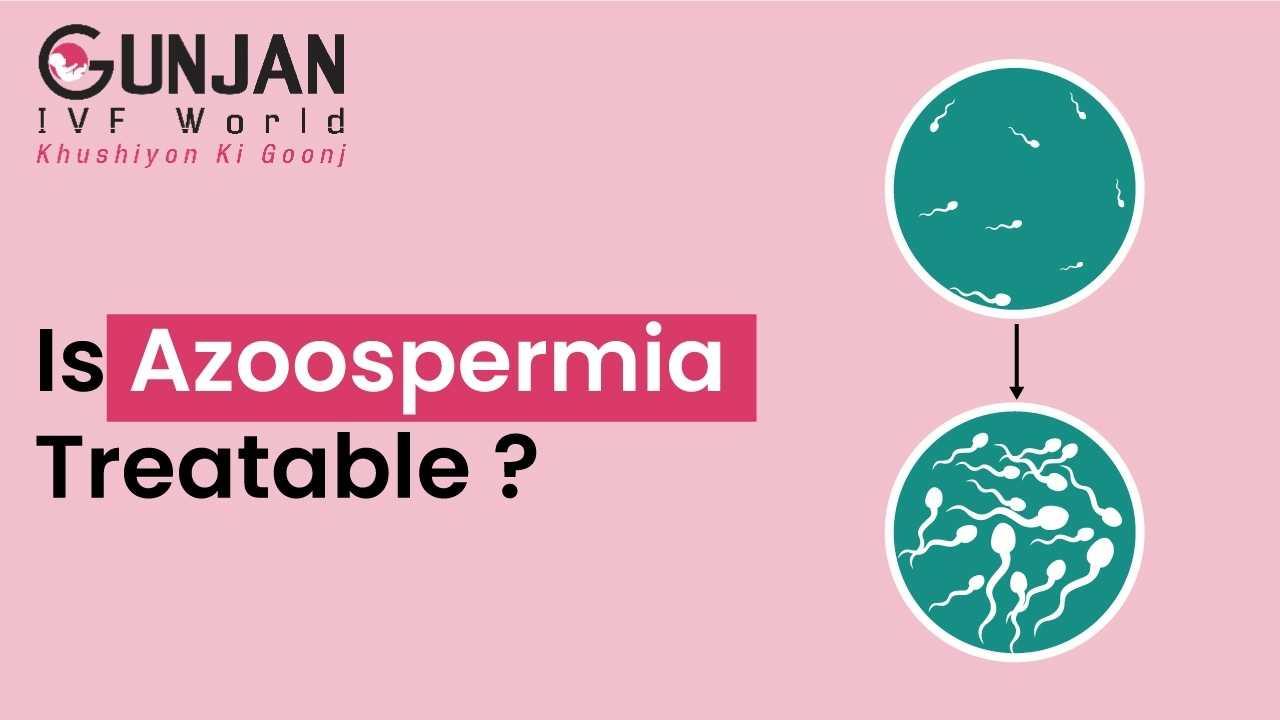
The absence of sperm in the ejaculate is the defining characteristic of the medical disorder known as azoospermia. This condition affects 1 percent of all men in the general population but 15 percent of those with male factor infertility. Even though azoospermia is very uncommon, a significant amount of information about the disorder, including possible treatment options, is now known.
If you are attempting to begin a family and believe that azoospermia may be why you are having difficulty conceiving — or if you have just recently been diagnosed with azoospermia — continue reading to discover more about the types, diagnosis, and treatment options associated with azoospermia.
What is Azoospermia?
Which Types of Azoospermia are Treatable?
Three primary forms of azoospermia may be distinguished depending on the reproductive cycle:
Pre-Testicular Azoospermia:
The function and functionality of the testicles are normal if your spouse has pre-testicular azoospermia, according to the diagnosis. However, the brain is unable to provide the proper instructions to create healthy sperm. This occurs when the brain’s endocrine glands cannot communicate with the body or control it to promote adequate sperm growth.
Testicular Azoospermia:
The testicles are the issue with testicular azoospermia. The brain releases chemicals necessary for proper sperm production, but the testes cannot optimally react to them. Testicular azoospermia may also result from problems with sperm cell formation.
Post-Testicular Azoospermia:
In this situation, the brain delivers all the signals necessary for the testicles to generate healthy sperm, and the testicles develop normal sperm. Therefore, there must be some obstruction or a defect in the ejaculatory system that stops it from going out.
Also Read : What Is the Most Common Cause of Azoospermia?
Book An Appointment
Follow Us On
How to Prepare for Azoospermia Treatment?
Your healthcare professional will question you about the following aspect of the medical record they are collecting for the diagnosis:
- History of fertility success and failure (your capability to have babies)
- Childhood diseases
- Injuries or operations on the pelvic region (this could result in duct obstruction or inadequate blood flow to the testicles)
- Infections of the urinary or reproductive systems
- Sexually transmitted diseases in the past
- Chemotherapy or radiation exposure
- Current and previous prescription drugs
- Any misuse of drugs, alcohol, or marijuana
- Latest fevers or heat exposure, such as using saunas or steam rooms (sperm cells are destroyed by heat)
- Family record of cystic fibrosis, learning difficulties, infertility, or birth abnormalities
Additionally, your medical professional will do a physical examination and look for:
- Your whole body, including your reproductive organs, indicates maturation or lack thereof.
- Your penis and scrotum, looking for the vas deferens, discomfort or swelling in the epididymis, the size of the testicles, the existence or absence of a varicocele, and any obstruction of the ejaculatory duct (through exam via the rectum) as indicated by enlarged seminal vesicles.
Your doctor may also request the following tests:
- Testosterone and follicle-stimulating hormone (FSH) levels are measured.
- Genetic analysis
- X-rays or ultrasounds of the reproductive organs to check for tumours, blockages, or an insufficient blood supply and any issues with size or form.
- Brain imaging is used to detect
- hypothalamic or pituitary abnormalities.
- The testes are biopsied (sampled for tissue). A typical biopsy would indicate that there is probably a blockage in the sperm transport route somewhere. Any sperm discovered in the testes may sometimes be preserved for later study or utilized to aid in conception.
Also Read : 5 Scary Myths About Fertility?
20+ Years Of Experience as Fertility Specialists
20 Years Of Experience as a Fertility Specialists
National Fertility Awards 2023
Call Us
+917042874533
What is the Best Treatment for Azoospermia?
Treatment for azoospermia depends on the underlying reason. Typical strategies include:
Surgery:
Doctors might be able to do surgery to clear a blockage in the vas deferens or even repair and rejoin an abnormal vas deferens for patients with obstructive azoospermia. A varicocele may be surgically treated if it is determined that it is the cause of azoospermia.
Medication:
Your doctor could suggest hormone therapies if low hormone levels or insufficient hormone production are the underlying cause of your condition. In addition to treating an estrogen imbalance, Clomid has also been used to inhibit estrogen.
Testicular sperm extraction (TESE):
Obstructive azoospermia patients often have problems delivering sperm to the semen rather than making enough sperm. TESE, a microsurgical procedure, may be used in this situation to remove sperm straight from the testicles. The sperm may subsequently be cryopreserved (frozen) for use in intracytoplasmic sperm injection (ICSI) or in vitro fertilization (IVF).
Conclusion
It might be frightening to get an azoospermia diagnosis or to hear “no sperm count.” Take a moment to calm yourself and remember that having this issue does not always indicate that you will be unable to produce biological children.
It’s critical first to comprehend the problem’s root cause. After examining and treating the problem, your physician may suggest several treatments to remove the blockage. Otherwise, treatments like IVF could be able to assist you, and your spouse conceive.
FAQ’s
How Long Does It Take to Cure Azoospermia?
The diagnosis and effective treatment of this ailment require roughly two to three weeks. As recommended by the physician, the patient must rest for a few days after the therapy is finished. Any instances of adverse effects must be reported right away to the doctor.
Is There Hope for Azoospermia?
Studies have revealed that a person with azoospermia may be cured with cutting-edge medical procedures and a healthy lifestyle. Azoospermia-related infertility may be overcome based on its kind and severity.
Share this with
Related Blogs
Does testicular temperature have an impact on male fertility
IVF specialists of the best IVF centre in Ghaziabad – Gunjan IVF World share an informative blog on one of the most ignored factors of male infertility. It is an alarming fact to know that one in seven couples is faced with male infertility. There could be various...
Is male menopause a myth or reality ?
IVF specialists of the best IVF centre in Ghaziabad – Gunjan IVF World debunk the myths about male menopause through this informative blog Menopause as a term is extremely common and mostly associated with women. But, it holds true for men too! Yes, men too have...
Follow Us On
About Author








